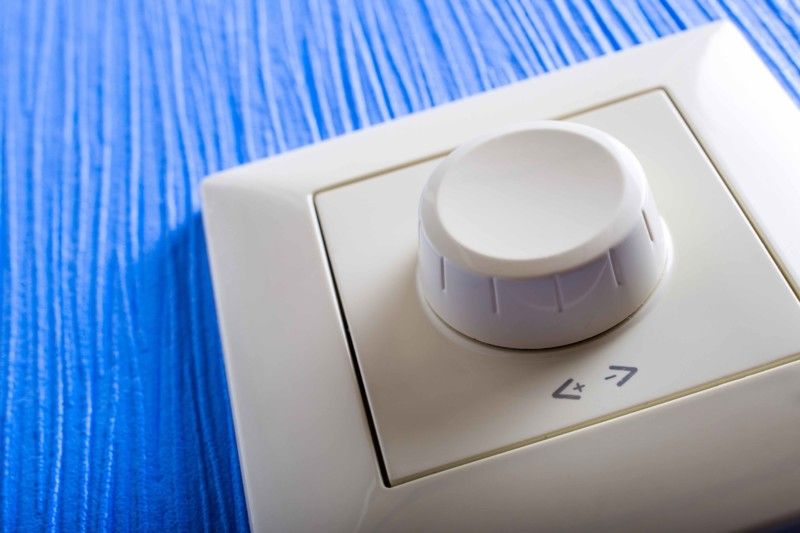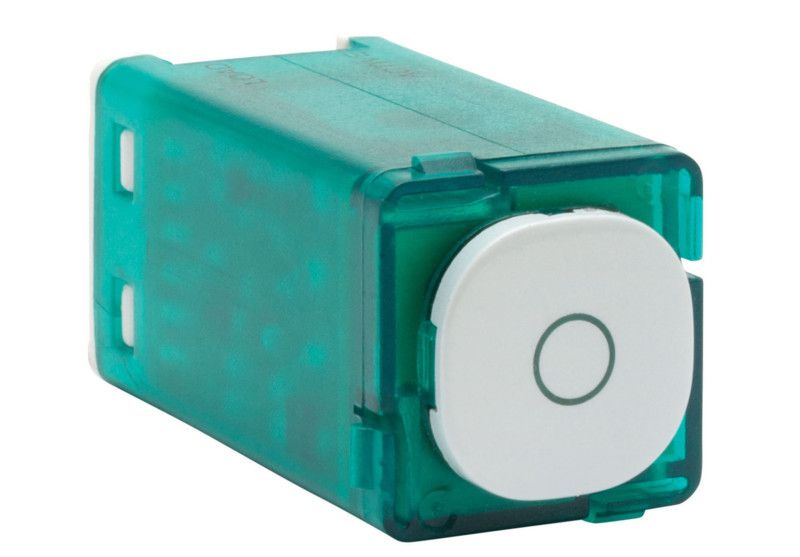Dimmer switches are an economical, easy way to make a big difference in your home’s lighting appeal, as well as in your energy use. An often overlooked decorating secret, dimmers can change the mood of a room with just a touch. Installing a dimmer switch or changing one out is a fairly simple DIY task that doesn’t take much time, effort or expense.
There are many good reasons to install dimmer switches around your house. When the lights aren't functioning at full capacity, they use less energy and save bulb life. Dimming lights can make a room more comfortable to be in and can contribute to the desired ambiance for a party, gathering or event.

Dimmer locations - When people think of dimmer switches, they often think of dining rooms or entry halls, which are common areas in which to find them. However, they can be useful in many different rooms and areas around a home:
Bathroom - Being able to dim the lights first thing in the morning will allow you to start your daily routine without bright light assaulting your eyes, and provide an easier transition from sleeping to waking. Also, adding a dimmer can give the effect of candlelight without introducing a fire hazard. For better relaxation, lower the lights before taking a luxurious bath.
Bedroom - Rarely do you truly need bright light in the bedroom. In order to keep your bedroom a place for rest, incorporating a dimmer can inform your body that the day is winding down and encourage better sleeping habits. If bright light is needed, result to windows and skylights for a natural source.
Kitchen - While full light may be needed for some tasks in the kitchen, the ability to turn the lights to a lower level can come in handy, especially for early morning coffee-making or for late-night snacking. The dimmer can also set apart the cooking area from the dining area; use overhead lighting above the island or kitchen table to distinguish the areas for bigger gatherings.
Hallways - Dimmers in hallways can be handy at nighttime, especially for households with little ones. Using the dimmer will keep bright lights from shining into bedrooms while ensuring safety in case someone gets up during the night.
Living Room or Media Room - Lower the lighting to transform your living room into your own movie theatre. The dimmer lets you crank the lights up again when reading a book or enjoying a hobby that needs a bit more light.
Outside Lights - Controlling the exterior light with a dimmer switch gives you better control over energy consumption; turn up the lights when you need to see outside, and dim them for security while conserving power.

Dimmer styles - Today, there are lots of different types of dimmer switches to choose. For true energy efficiency, be sure to select a model that is rated for use with compact fluorescent lamp (CFL) and light-emitting diode (LED) bulbs. Be sure to select dimmable CFLs whenever using this type of bulb with dimmer switches, or it could pose a fire hazard. Before purchasing a dimmer switch, know what wattage you will need and whether you have a single pole or three-way switch.
You’ll also need to decide which control style you want. The rotary style, with a circular turning knob, is the most common type of dimmer. A toggle style looks like a regular light switch, but has a smaller piece on the side that moves up and down to control the light level. A rocker control works in a similar manner as the toggle, but the small control piece is found on the side of a larger light switch. A slide has a horizontal switch that also moves up and down for light control, and tap switches are usually intended for use with LED bulbs. Scene selector controls have several buttons that let you choose the lighting level. You might want to match the control style with other light switches in the room, or home, for consistency.
If you notice a dimmer switch buzzing, you may need to simply change out the light bulb(s) in the fixture with new ones or a lower wattage. A humming dimmer switch can also indicate that the switch has insufficient wattage capacity or is of poor quality.
Once you get accustomed to dimmer switches and the control and flexibility they provide, you’ll want them in every room. Dimmer switches are a great example of how small changes can make a big difference in a home. It’s surprising how taking adjusting a small component, like lighting, can add a whole new perspective to a room.
See us for the best range of dimmers and the right advice on these handy additions to any home!
FAQ'S
Are there any safety considerations or precautions to keep in mind when installing dimmer switches, especially regarding compatibility with different types of bulbs?
Safety considerations are paramount when installing dimmer switches, especially concerning the compatibility with different types of bulbs. It's crucial to select a dimmer switch rated for use with the specific bulbs you have, such as compact fluorescent lamp (CFL) or light-emitting diode (LED) bulbs. Failure to do so could pose a fire hazard. Additionally, proper installation following manufacturer instructions is essential to ensure safe operation.
Can dimmer switches be easily integrated into existing home automation systems, and what additional features or benefits might this offer?
Integrating dimmer switches into existing home automation systems can offer several benefits beyond basic manual control. These systems allow for convenient remote operation via smartphone apps or voice commands, scheduling functionality to automate lighting based on time or occupancy, and even integration with other smart devices for enhanced functionality. This integration can contribute to improved energy efficiency and overall convenience in managing household lighting.
How do dimmer switches impact energy consumption and overall electricity bills, particularly when used in conjunction with energy-efficient bulbs like CFLs and LEDs?
Dimmer switches can have a significant impact on energy consumption and electricity bills, especially when used with energy-efficient bulbs like CFLs and LEDs. By dimming lights when full brightness isn't necessary, homeowners can reduce electricity usage and extend bulb life, leading to cost savings over time. However, it's essential to ensure proper bulb-dimmer compatibility and use dimmable bulbs to maximize energy efficiency and avoid potential safety hazards.
